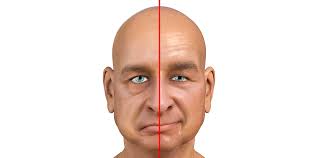Headaches, Chiropractic, and Prevention
Headaches affect most of us—in fact, 9 out of 10 adults! (with more younger patients showing up in chiropractic offices suffering with this condition, too!)
Some headaches can be occasional or frequent, dull or throbbing, or more like a debilitating pain with nausea and vomiting. Triggers are those factors involved in bringing on a headache, such as the following:
• Foods: Caffeine, high sugar or salt content, red wine, cheese, chocolate, nuts, or cured meats.
• Environmental Stimuli: Noise, light, stress, or weather changes.
• Behaviours: Posture, insomnia, excessive exercise, blood sugar changes, dehydration, sinus problems.
Today, Canadians engage in more sedentary activities, and spend more hours in one fixed position (usually sitting). This increases joint irritation and muscle tension in the neck and upper back, causing most headaches.
Roughly, 5% of all headaches are warning signals caused by physical problems. The remaining 95% are muscle tension, migraine, or cluster headaches, and are not caused by disease. The causes of headaches are not well understood, but a family history of headaches, neck stiffness, and stress are all common factors.
Tension-type: Most popular kind of headache. Usually occurs due to tension in the muscles of the neck, and can be caused by poor posture, injuries (ex. whiplash), stress and anxiety, and eye strain. It can create a constant pain and pressure, usually described as dull and achy, and can often be felt on both sides of the head, forehead, temples and back of the head (often referred to as a “tight band”).
Cervicogenic: Stems from the neck and spinal structures. Pain triggered or worsened by movement of the neck, and usually on one side of the head (often starting at the base of the skull and spreading to the forehead).
Migraine: Cause is still unknown but seems to involve genetics and environment (hormone changes, food and additives, stress, sleep, physical and sensory factors, weather changes, and medications). Intense throbbing/pulsing sensation on one or both sides of the head frequently accompanied by sensitivity to light and sound, nausea and vomiting. Migraines can be preceded by an “aura” that can present as a sensation of flashing lights, blind spots in your vision, or tingling.
Cluster: Similar to migraines in that the cause is unknown but may be caused by problems in regulating body temperature, blood pressure, hormones, sleep, alcohol, tobacco, and drugs. Causes a severe stabbing, penetrating, burning, or explosive recurring pain that is located on one side of the head. Can have a rapid onset and can present in patterns or clusters over a specific period of time. Often described by patients as starting behind the eye, and can cause redness or watering of the eye, stuffy or runny nose, droopy eyelid, facial swelling or flushing, and sensitivity to light and noise.
Chiropractic Care for Headaches:
Chiropractic treatment helps to improve spinal function and alleviate the stress on your body and nervous system. A 2014 report in the Journal of Manipulative and Physiological Therapeutics (JMPT) found that chiropractic care improved outcomes for the treatment of acute and chronic neck pain. Another JMPT study in 2011 found that chiropractic adjustments helped improve migraines and cervicogenic headaches.
Chiropractors can assess, diagnose, and offer treatments supported by research demonstrating that spinal adjustments can help to decrease the intensity and frequency of headaches. Advice may also given on posture, exercise, supplements, the use of other modalities, lifestyle recommendations, and relaxation techniques that help can put patients on the road to overall wellness.
Prevention:
Try to figure out what triggers your headaches and avoid them! Take a break and stretch every 30 minutes if you spend a large amount of time in one fixed position, such as in front of a computer, or reading. Low-impact exercise may help relieve muscle pain, but if you are prone to dull, throbbing headaches, avoid heavy exercise and engage in activities like walking and low-impact aerobics. Avoid teeth clenching and grinding, as this may result in TMJ disorder and lead to a form of tension headache. Drink at least eight 8 ounce glasses of water to ensure your muscles have good hydration.
It is important to take your headaches seriously, as they are not a normal condition ever! If you frequently take a pain reliever for your headaches, or if the headache pattern changes or gets worse, seek prompt health care attention. As well, if your headache is sudden and severe, follows a head injury, or is accompanied by fever, stiff neck, weakness, numbness or difficulty speaking, seek immediate medical attention. Doctors of Chiropractic undergo extensive training to help their patients in many ways beyond low back pain, and know how the spine relates to problems in other parts of the body.




